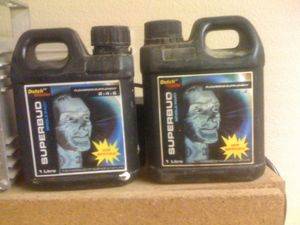budstud
New member
I have used phosphoload (formerly SuperBud) for a couple years. There is no doubt that yield is greatly enhanced, at least 30 percent in my trials) People complain of the price but when you conceder the gains it really turns out to be the most cost effective supplement on the market, if your yield goes from 10lbs to 13lbs what’s $50 worth of phosphoload?
Has anybody used phosphoload as a foyer spray? I would like to try it on a few plants in a hydro system without applying to all of the system.
Has anybody used phosphoload as a foyer spray? I would like to try it on a few plants in a hydro system without applying to all of the system.




